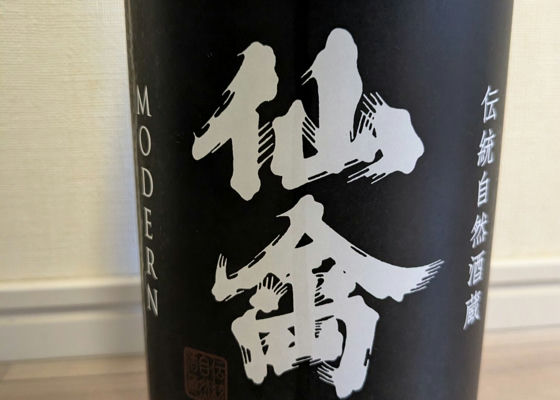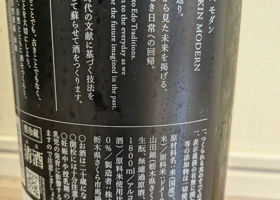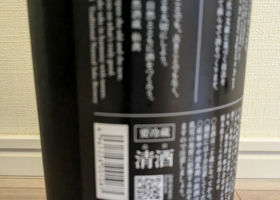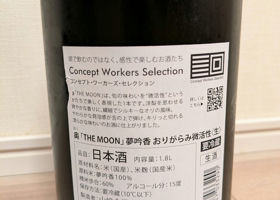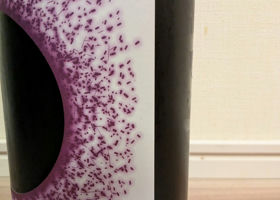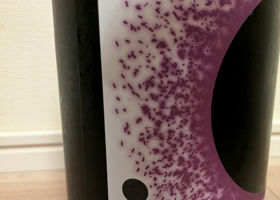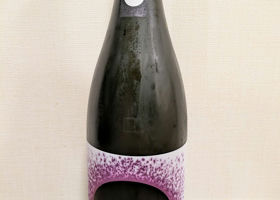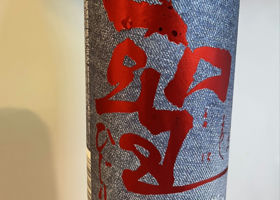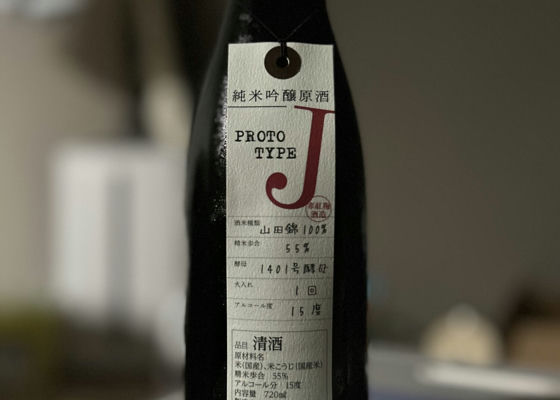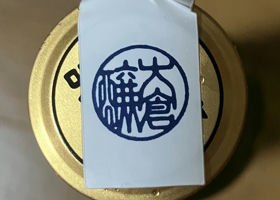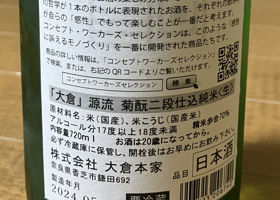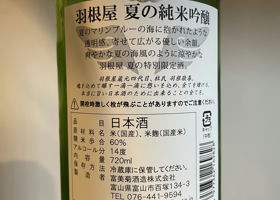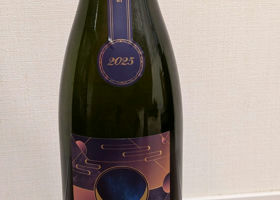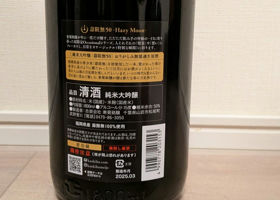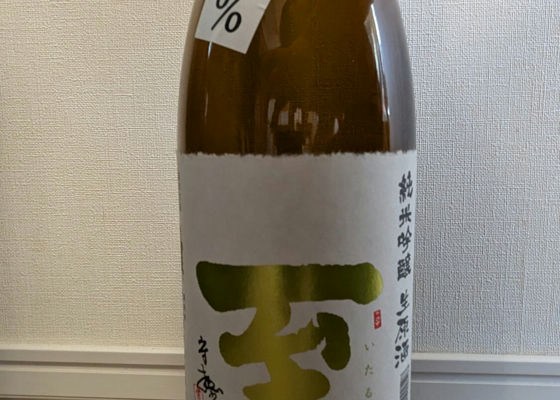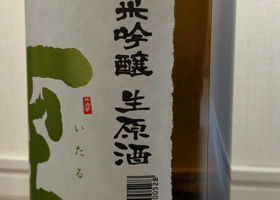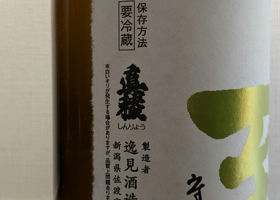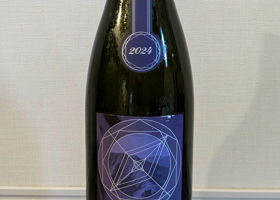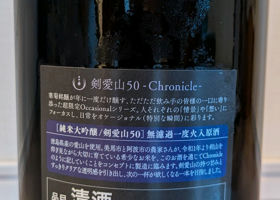Timeline
もよもよThis bottle is a re-branding of the well-known Sengoku's "Edo-style" concept. Edo karaori" refers to the process of making sake with a focus on the use of raw materials, water, and rice. It is divided into Zero type: Nama-shu, Ichi type: Hi-ire, Ni-shiki: Ooragarami, and Sanshiki: Happo-genshu (sparkling sake).
Even though it is a nama-shu, it is still a Senkyoku. It tastes like a grape. It is juicy and slightly muddy, and can be drunk neat. It has a more classic and complex feel, but anyway, it is rather drinkable without any unpleasant bitterness.
It might go well with soy sauce-based Japanese food. It might also go well with Western food, so it's versatile. 奥THE MOON 夢吟香 おりがらみ微活性生酒おりがらみ もよもよThis is the first time for Oku to try it, but it was recommended by a sake friend. The Yume-Ginko variety used here was developed in Aichi Prefecture and is a cross between Yamadanishiki and Wakamizu. It is a late rice variety with large grains that can withstand high rice polishing, and is said to produce a refreshing and flavorful sake. The liquor store's sales pitch was "adult calpis with the sweetness of melon," but what was it?
When opened, it was so carbonated that the lid blew off. The taste is fruity sweetness with a little less acidity, like pear and melon. It is thick enough because it contains a cage. It is a melon calpis soda with low acidity, silky and fruity.
A little bitterness comes later on, so the taste is well balanced. It seems to go well with food. 酒おやじぃぃぃI saw the label "PROTOTYPE" in a corner of the well-stocked HASHIWAYA and bought it right away!
I saw the label "PROTOTYPE" and immediately bought it!
It is hard to imagine from the lightness of the mouthfeel.
The spread of robust umami and a little bitterness
It has a good sharpness with a little bitterness, which is hard to imagine from its lightness in the mouth.
The structure is so clean that it is hard to believe that it is a PROTOTYPE!
Another sake that you can keep drinking 🍶. 酒おやじぃぃぃAroma that leaves your nose when you put it in your mouth.
After the fruity sweetness on both ends of the tongue
After the fruity sweetness on both ends of the tongue, you will feel the spiciness and be able to enjoy it.
A sake that you can keep drinking 🍶.
#Hashiwaya Sake Brewery
#Ota Ward 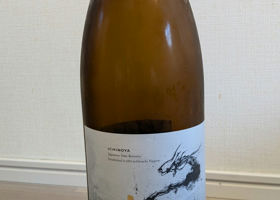
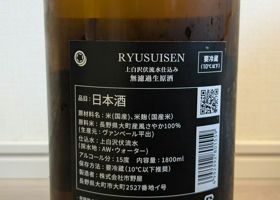
もよもよI bought this bottle because the phrase "recommended by the young master of the liquor store" piqued my interest. It is a liquor store that I trust, so there is no doubt about it. The brewery is Ichinoya in Nagano, and they dug a well 200 meters deep with a local mineral water maker to use as brewing water. They have recently renovated their facilities, so you can expect great things from them.
When opened, it has a slightly carbonated taste, and when you drink it, it has a grapefruit-like sourness and a slightly bitter taste. It is also sweet, with a hint of melon. Yes, this is the kind of flavor that is popular these days.
It is not too sweet, so it seems to go well with a variety of foods. I think it would go well with a refreshing cheese or white sauce with white fish.
I thought I had somehow heard of Ryusuisen, but it was a sake I had tasted long ago. However, the label has changed a lot. I heard that the female toji (master brewer) has been experimenting with everything from taste to labeling. I want to support breweries that are run by young people. ジェイ&ノビィHello, Mr. Moyomoyo😃
I have a theory that you can't go wrong with a recommendation from a trusted liquor store 🤗Ryusuisen, which is not too sweet! I'll give it a try when I see it 😋. もよもよ@Jay & Nobby.
Asking a sake professional is a definite choice. I've never been off in my experience lol.
Ryusuisen is a modern bottle, but definitely one of the higher level ones. You won't regret it! もよもよI found a label I had never seen before at Kangiku. Kotobukinmoku is the name of a rice whose father is Yamadanishiki, and it is made in Fukuoka Prefecture. How about at the spring moon viewing? The label commented, "How about at spring otsukimi?
This sake is so energetic that it makes a noise when opened. It has a fruity flavor like apple, lychee, and pear, but very tasty without being too sweet. It has a silky mouthfeel due to the fact that it is orikara-mi.
It would be delicious with white meat fish sashimi. もよもよItzumi Shuzo is a small brewery on Sado Island. I heard it is somewhat of a hot topic, so I was curious to purchase a bottle.
The taste is that of a moderately strong sake. It has a strong flavor of rice and a slightly melon-like fruity taste. The richness is stronger when drunk chilled. It tastes better when drunk slightly warmed, as the sweetness increases.
It is said to be delicious with sashimi. It has a strong umami taste of rice, so dishes with a soy sauce-like flavor may go well with it. It is surprisingly good with meat and potatoes. もよもよI know it has been a while since I have had a Kangiku, but I can assure you that it is definitely delicious. This is another sake using "Ken Aiyama," which is quite interesting. Aiyama is a rare rice that is almost 100% produced in Hyogo Prefecture, and its production is not that large to begin with. It is a diamond of sake rice. This sake has quite a story behind it, as it is brewed with Tokushima-grown Ken-Aiyama.
The taste is a mixture of fruity acidity, bitterness, and sweetness along with a lactic acidity. This is a grape in my opinion. I don't know if grape calpis is the right way to describe it, but it has a nice sourness and slight bitterness. I thought Kangiku was sweet, but I don't think this one is as sweet.
I found a very tasty sake. It is good enough to drink by itself, but I think it would also go well with salty cured ham. RecommendedContentsSectionView.title







